The vibrant red Texas cichlid is a beloved fixture of the rivers in south Texas and northeast Mexico. With its bright ruby body adorned with electric blue spots, this freshwater fish brings a flashy splash of color to the underwater habitat it calls home.
Table of Contents
Known scientifically as Herichthys cyanoguttatus, the red Texas cichlid is a member of the Cichlidae family. It shares this distinction with over 2,000 different species of fish, including other popular aquarium inhabitants like the oscar and the angelfish.
Unlike many aquarium staples, the red Texas cichlid is endemic just to the waters of the Rio Grande basin, spanning Texas and Mexico. Within this range, they primarily stay in the slower-moving backwaters and pools of the river system. Here they dwell close to the sandy or muddy bottom, often gathering around submerged branches or rocks.
A hearty and adaptive fish, the red Texas cichlid is devoted to its native waters. Conservation efforts aim to protect the fragile Rio Grande ecosystems this species relies on. While still ranked as a species of Least Concern, habitat disruption from dams and water diversion poses an increasing risk.
Beyond its splash of color, the feisty red Texas cichlid boasts an outgoing personality. Its pugnacious attitude belies the close familial bonds these fish form in the wild. Mated pairs work diligently to care for their eggs and fry. For aquarists seeking an interactive yet beautiful freshwater species, the red Texas cichlid delivers drama and charm in one flashy package.
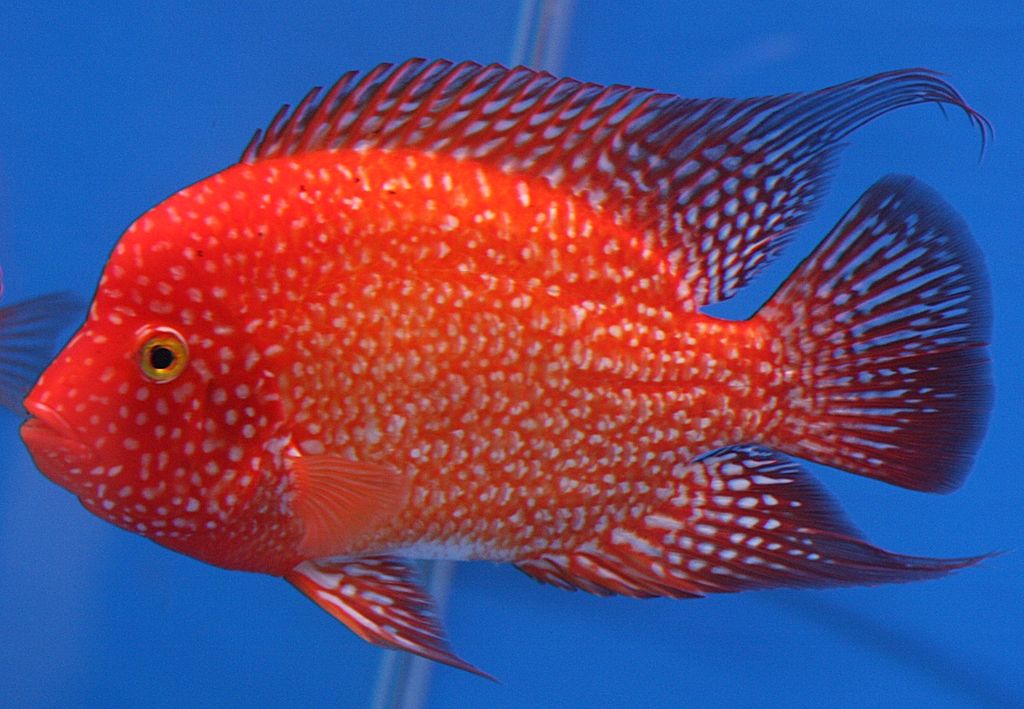
Key Information
The red Texas cichlid displays several color variations, including bright red, yellow, and orange morphs. While most commonly a stunning ruby red, some varieties exhibit a more golden or tangerine hue. Selective breeding has also produced different color morphs.
| Family | Cichlidae |
| Price | $10-$25 |
| Common Names | Rio Grande cichlid, Rio Grande perch |
| Variants | Red, yellow, orange color morphs |
| Ideal Tank Size | 75 gallons+ |
| Water Parameters | pH 7.0-8.0, hardness 10-15 dGH |
| Lifespan | 10 years |
| Full Size | 8 inches |
| Natural Environment | Rivers, streams, ponds |
| Behavior | Aggressive, territorial |
| Habitat Preference | Bottom-dwelling |
| Aquarium Decor | Rocks, driftwood |
| Ideal Tank Mates | Large characins, catfish, cyprinids |
| Fish to Avoid | Smaller or timid species |
| Best Foods/Diet | Omnivore – flakes, pellets, live foods |
| Disease | Ich, fin rot |
| Sex-Switch | No, distinct males and females |
| Gender Differences | Males larger with pointed dorsal/anal fins |
| Care Level | Moderate |
| Breeding Level | Moderate |
Ideal Tank Mates
The red Texas cichlid is an aggressive and territorial fish that requires tank mates that can match its feisty personality. Selecting the right tank mates is critical to creating a compatible community tank.
When choosing tank mates for the red Texas cichlid, opt for other large, robust fish that inhabit similar areas of the aquarium. Bottom-dwelling species are ideal, as they are less likely to encroach on the cichlid’s space. Fish with peaceful temperaments are best, as they are less likely to engage in conflict.
Giant Danio
The giant danio makes an active tank mate that dwells in the upper to mid-levels of the tank. Its fast speed allows it to avoid confrontation with the cichlid. Plus, the giant danio grows large enough to not fall prey to the red Texas cichlid.
Silver Dollar
Often sharing the same South American habitats, silver dollars coexist well with cichlids. They spend most of their time at the top and middle of the tank, out of the cichlid’s way. With size on its side, the silver dollar makes for a formidable tank companion.
Bristlenose Pleco
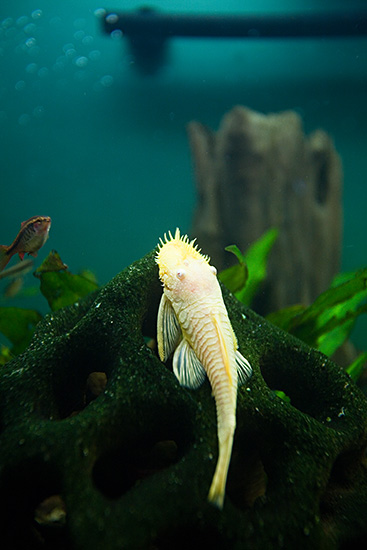
As an armored bottom feeder, the bristlenose pleco handles itself well against aggressive tank mates. It feeds on algae and leftovers that the cichlid misses. The pleco’s hunkered down lifestyle also keeps it off the cichlid’s radar. Its digging may even benefit the substrate.
Featherfin Catfish
Bottom-dwelling featherfin catfish possess armored plating and spines that serve as protection against bullying. Their primarily nocturnal habits also allow them to stay out of the red Texas cichlid’s way. These behaviors make them ideal tank mates.
Common Pleco
The ubiquitous common pleco truly earns its name in community tanks with red Texas cichlids. Their suckermouths feast on algae while their armored bodies withstand nipping. They also grow over a foot long, rivaling even large cichlid species.
Green Terror Cichlid
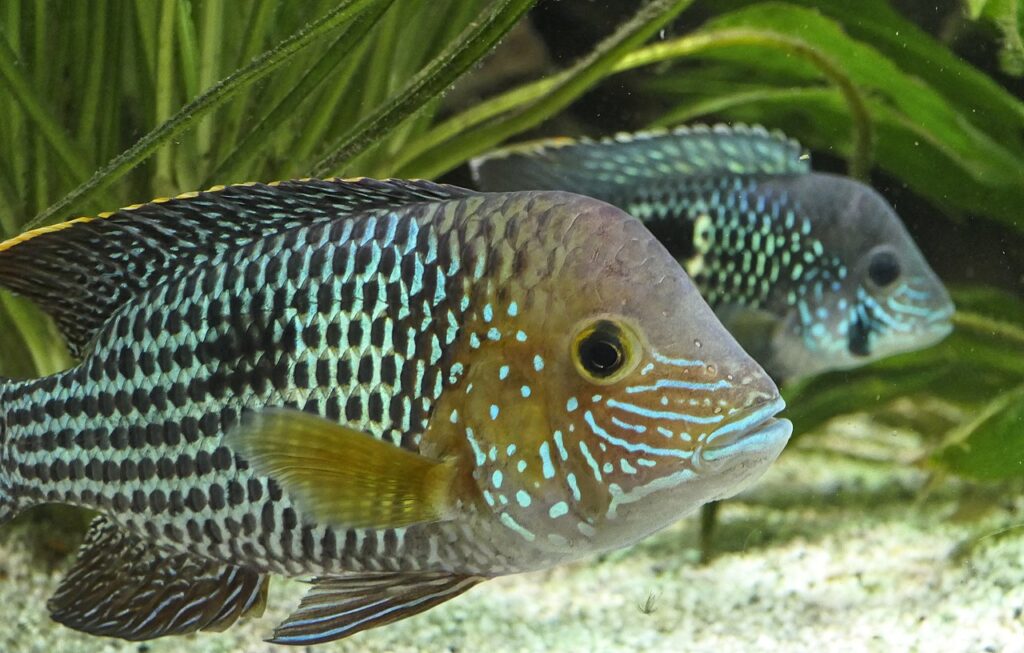
While most cichlids face aggression from red Texas cichlids, the large green terror can hold its own. These two species generally ignore each other, competing only for prime tank areas. Therefore, provide plenty of space and sight breaks in a shared tank.
Firemouth Cichlid
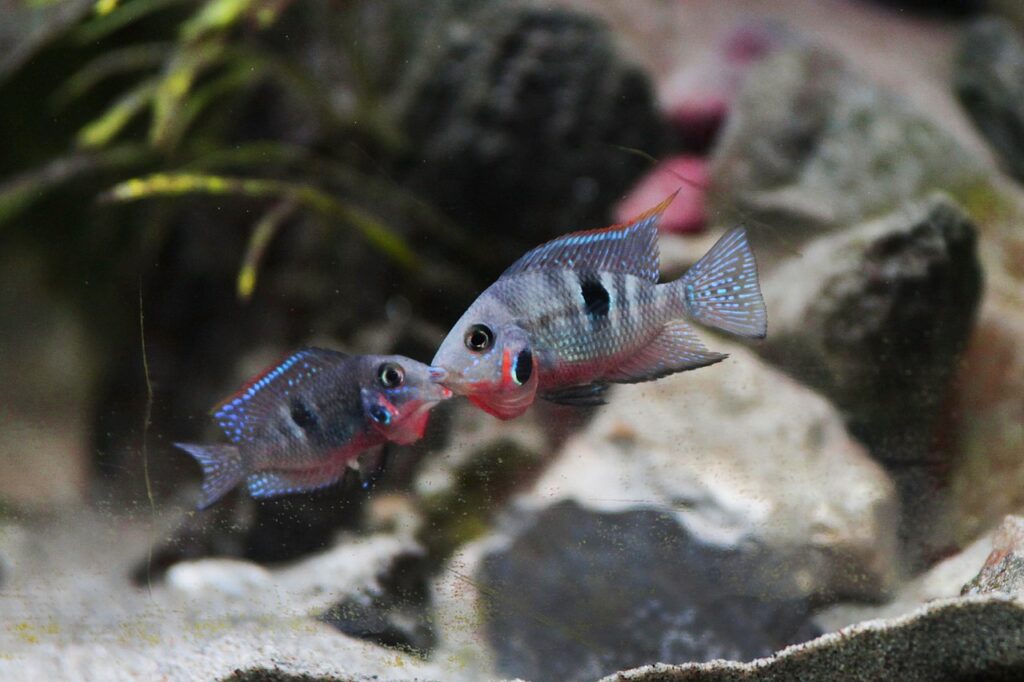
Another cichlid, the fiery-colored firemouth, makes for a suitable tank companion. Firemouths occupy the tank’s lower regions and substrates, keeping out of the red Texas cichlid’s main territory. These behaviors allow the two species to coexist peacefully.
Convict Cichlid
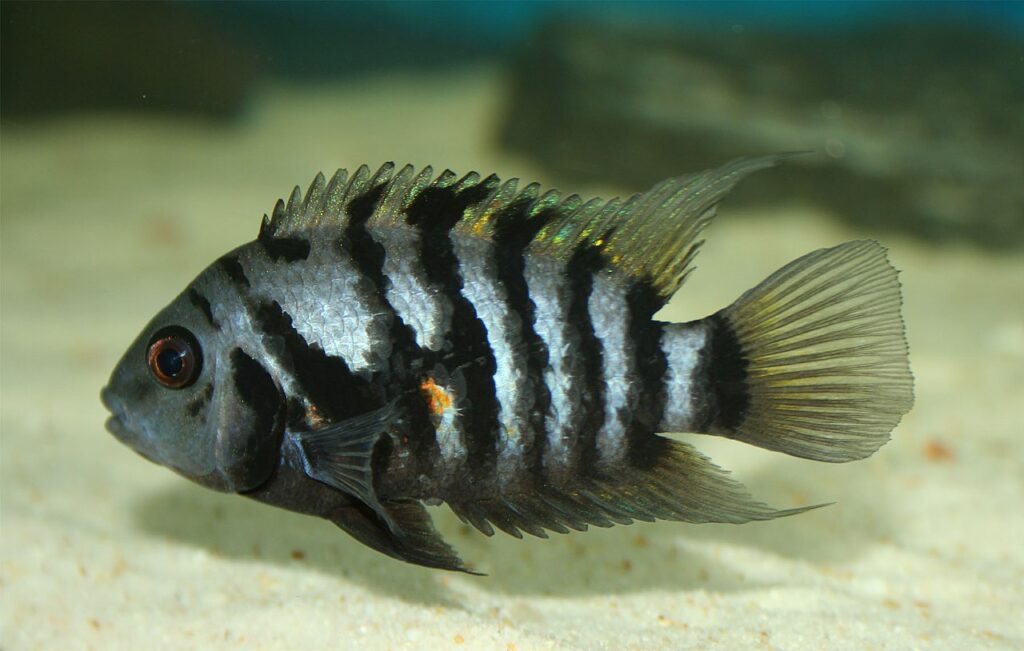
The bold convict cichlid boasts the aggression and attitude to stand up to bullying. Though small in stature, it is feisty by nature and able to stake out its own space in a red Texas cichlid tank. Provide ample room and hiding spots to reduce conflict between the two.
Jack Dempsey
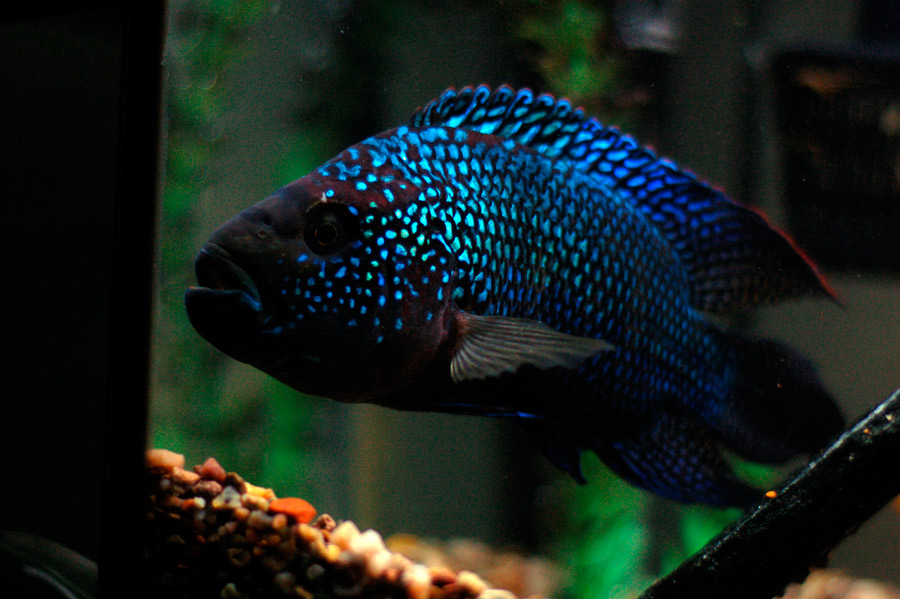
Growing nearly as large as the red Texas cichlid, the Jack Dempsey claims size on its side. Its rugged Central American origins also make it no stranger to dealing with aggressive tank mates. As long as both species have their own territories, they make nice tank companions.
Oscar
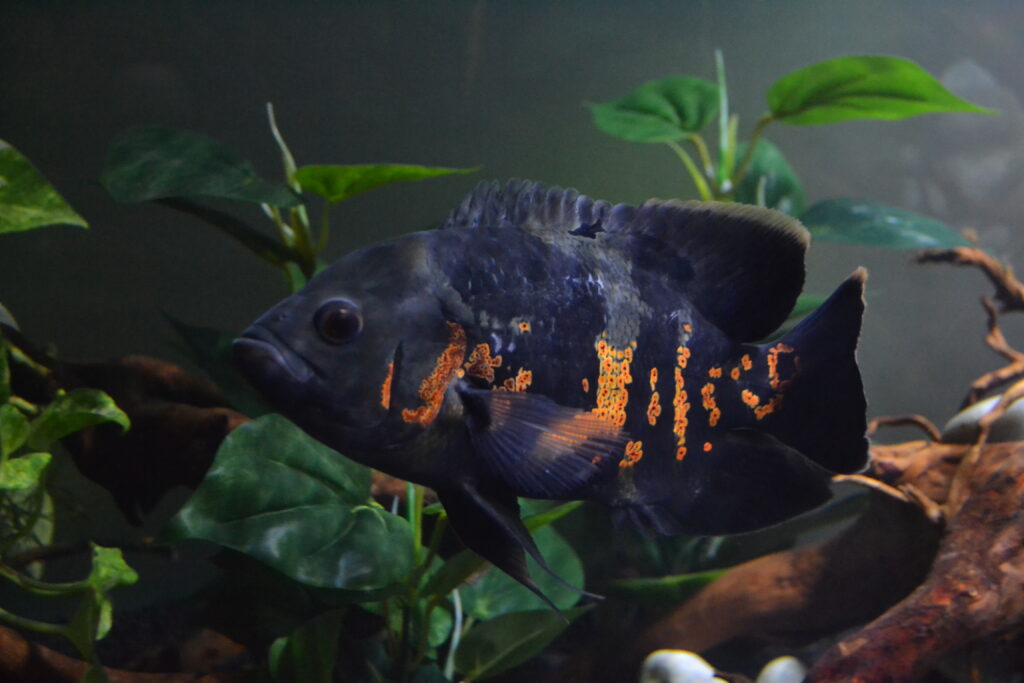
The red Texas cichlid meets its match in the Oscar. Similar in attitude and growing to lengths over a foot, these two cichlids generally cohabitate without issue. Provide lots of open swimming room and a fine sandy substrate to meet both species’ needs.
Jaguar Cichlid
As another large and assertive fish, the Jaguar cichlid handles itself admirably against red Texas cichlids. Jaguars spend most of their time near the bottom of the tank, avoiding confrontation over prime territories. Decor and space permitting, these species can coexist well.
Blood Parrot Cichlid
Though an artificially hybridized species, blood parrot cichlids still need tank mates that can hold their own. Their large size makes them suitable companions, as they are unfazed by bullying. Their slow pace also means they rarely encroach on the red Texas cichlid’s area.
Flowerhorn Cichlid
Similarly artificially bred, flowerhorn cichlids grow quite large and aggressive. While they may squabble over tank dominance, their comparable attitudes and stats allow these two cichlids to live together with proper care and setup. Provide barriers and sight breaks between prime territories.
FAQs
Are red Texas cichlids aggressive?
Yes, red Texas cichlids are notoriously aggressive. In the wild, they stake out and defend territories against other fish. Even in home aquariums, their pugnacious attitudes persist. Red Texas cichlids may bully, nip, and even kill tank mates that invade their space or appear weak. Providing ample room and sight barriers can help curb aggression.
What pH level do red Texas cichlids need?
Red Texas cichlids thrive in water with a pH between 7.0-8.0. Mimicking their natural river habitat parameters is key. Using crushed coral as a substrate additive or buffering supplements helps maintain an ideal alkaline pH for these fish. Rapid pH fluctuations can stress red Texas cichlids, so stabilize levels.
Do red Texas cichlids change color?
Yes, red Texas cichlids can change color, especially when agitated. Deepening shades and a darkened horizontal stripe may signal aggression or stress. On the other hand, males intensify their red hue when courting females. Providing a comfortable, low-stress environment keeps their color vibrant.
How often should you feed red Texas cichlids?
Feed red Texas cichlids once or twice daily. As omnivores, they need both meaty and plant-based foods. Use a quality flake or pellet as a dietary base, supplemented with live, frozen, and freeze-dried foods like brine shrimp, krill, and spirulina. Juveniles need more frequent, smaller meals 3-4 times daily.
What temperature do red Texas cichlids need?
Red Texas cichlids prefer warm tropical water temperatures from 72-82°F. Equip their tank with a reliable heater to maintain a stable temperature within this range. Rapid temperature fluctuations can shock their systems, compromising their health and immune systems.
How big do red Texas cichlids get?
In home aquariums, red Texas cichlids reach about 8 inches long when fully grown. Selective breeding has produced some larger varieties. Provide at least a 6 foot by 2 foot tank footprint to accommodate their mature size. These cichlids need horizontal swimming space more than height.
Are red Texas cichlids good community fish?
Red Texas cichlids can work in community tanks but need special considerations. Tank mates must be robust, sizable, and able to stand their ground against aggression. Bottom-dwelling fish that occupy different areas of the tank have the best chance of success. Provide barriers and sight breaks.
How often should you do water changes for red Texas cichlids?
Perform 25-30% weekly water changes for red Texas cichlids. Their waste outputs quickly dirty water, and they are sensitive to nitrate build-up. Using strong filtration and efficient biological media helps reduce maintenance needs. Gravel vacuuming during water changes keeps nitrates down.
What decorations do red Texas cichlids need?
Red Texas cichlids appreciate driftwood, rock formations, and clay pots that mimic their natural habitat. This decor also breaks up sight lines to reduce aggression. Leaf litter and floating plants provide additional cover and diffuse harsh lighting. Open, sandy spaces should exist for digging pits.
Can you keep red Texas cichlids alone?
It is possible but not ideal to keep a single red Texas cichlid alone. In the wild, they form loose social groups and pairs for breeding. Loneliness and lack of stimulation may lead to skittishness, lethargy, or erratic behavior. If kept singly, provide an extra enriched habitat to maintain health.